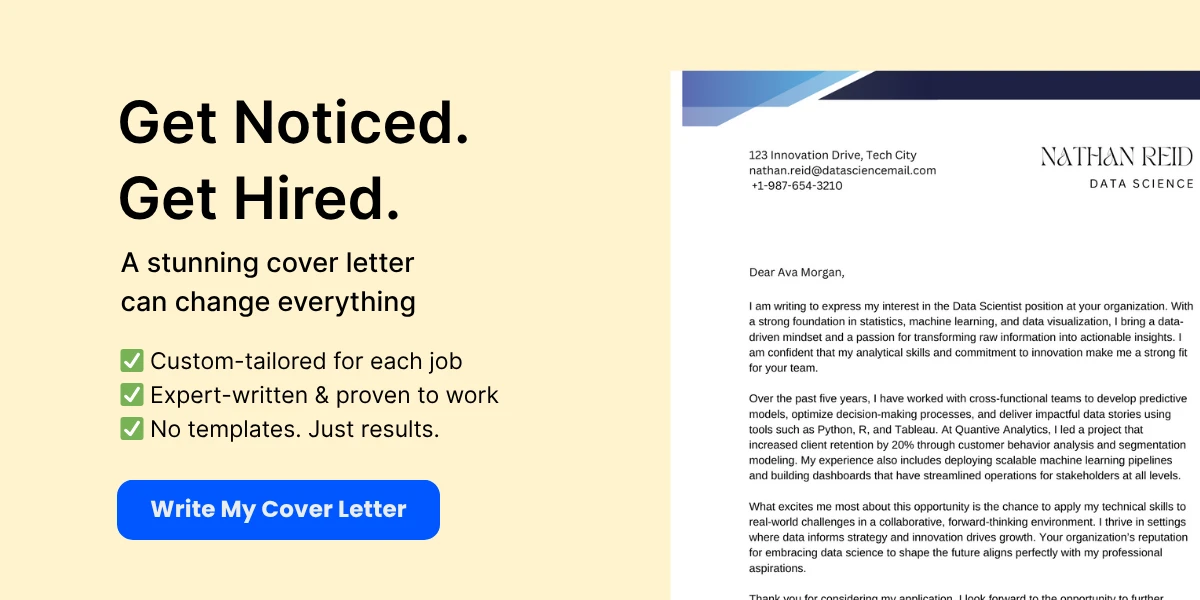In the dynamic landscape of modern business, senior managers play a pivotal role in steering organizations toward success. These seasoned professionals are not just decision-makers; they are strategic visionaries, team leaders, and catalysts for change. Recognizing the key roles and responsibilities of senior managers is crucial for those aiming to navigate the complexities of leadership and organizational management.
As the bridge between executive leadership and operational teams, senior managers take on a wide array of responsibilities, including strategic planning, resource allocation, performance management, and fostering a productive organizational culture. Their influence goes far beyond oversight—they shape long-term direction, drive innovation, and ensure goals are met with precision. Those looking to sharpen their leadership trajectory may benefit from career planning and consulting tailored to management professionals.
This exploration highlights the multifaceted functions of senior managers, revealing how they address organizational challenges, inspire high performance, and nurture talent within their teams. Whether you are aspiring to move into leadership, already in a senior role, or seeking to better understand management dynamics, gaining insights into effective leadership can provide a strategic advantage. If you’re positioning yourself for such roles, building a professional CV that emphasizes these competencies is essential. You may also consider support with job search planning to align your experience with the right opportunities.
Strategic Leadership
Strategic leadership is a critical function of senior managers, encompassing a range of responsibilities that guide an organization towards its long-term goals. This section delves into the key roles and responsibilities associated with strategic leadership, including vision and mission development, long-term strategic planning, organizational alignment, change management, and risk management.
Vision and Mission Development
The foundation of effective strategic leadership lies in the development of a clear and compelling vision and mission. The vision articulates what the organization aspires to become in the future, while the mission defines its purpose and primary objectives.


Senior managers play a pivotal role in crafting these statements. They must engage with various stakeholders, including employees, customers, and board members, to gather insights and perspectives. This collaborative approach ensures that the vision and mission resonate with the entire organization.
For example, consider a technology company aiming to lead in artificial intelligence. The vision might be “to empower every person and organization on the planet to achieve more through AI,” while the mission could focus on “developing innovative AI solutions that enhance productivity and creativity.” Such statements not only inspire employees but also guide decision-making and strategic initiatives.
Long-term Strategic Planning
Once the vision and mission are established, senior managers must engage in long-term strategic planning. This process involves setting specific, measurable goals that align with the organization’s vision and mission. It requires a thorough analysis of the internal and external environments, including market trends, competitive landscape, and organizational capabilities.
Senior managers often utilize frameworks such as SWOT analysis (Strengths, Weaknesses, Opportunities, Threats) to assess the organization’s position. For instance, a retail company may identify its strong brand recognition (strength) and the growing trend of online shopping (opportunity) while recognizing its outdated supply chain system (weakness) and increasing competition (threat).
Based on this analysis, senior managers can develop strategic initiatives that leverage strengths and opportunities while addressing weaknesses and threats. This might involve investing in e-commerce capabilities, enhancing customer experience, or exploring new market segments. The strategic plan should also include key performance indicators (KPIs) to measure progress and success over time.
Organizational Alignment
Organizational alignment is essential for ensuring that all parts of the organization are working towards the same goals. Senior managers are responsible for fostering alignment across various departments and teams. This involves communicating the strategic plan effectively and ensuring that every employee understands their role in achieving the organization’s objectives.


To achieve alignment, senior managers can implement regular communication channels, such as town hall meetings, newsletters, and team briefings. These platforms provide opportunities for leaders to share updates on strategic initiatives, celebrate successes, and address challenges. Additionally, senior managers should encourage feedback and open dialogue, allowing employees to voice their concerns and suggestions.
For example, a healthcare organization may implement a new patient care strategy aimed at improving service quality. Senior managers would need to ensure that all departments, from nursing to administration, understand the importance of this initiative and how their roles contribute to its success. This could involve training sessions, cross-departmental meetings, and performance incentives tied to patient care metrics.
Change Management
In today’s fast-paced business environment, change is inevitable. Senior managers must be adept at change management, guiding their organizations through transitions while minimizing disruption. This involves not only implementing new strategies but also managing the human side of change.
Effective change management begins with a clear communication strategy. Senior managers should articulate the reasons for the change, the benefits it will bring, and how it will impact employees. Transparency is key; when employees understand the rationale behind changes, they are more likely to embrace them.
Additionally, senior managers should provide support and resources to help employees navigate the change process. This might include training programs, mentorship opportunities, and access to tools that facilitate the transition. For instance, if a company is adopting a new software system, senior managers should ensure that employees receive adequate training and support to adapt to the new technology.


Moreover, senior managers should be prepared to address resistance to change. This can be achieved by actively listening to employee concerns, involving them in the change process, and demonstrating how the change aligns with the organization’s vision and mission. By fostering a culture of adaptability and resilience, senior managers can lead their organizations through change more effectively.
Risk Management
Risk management is a crucial aspect of strategic leadership. Senior managers must identify, assess, and mitigate risks that could impact the organization’s ability to achieve its strategic goals. This involves both proactive and reactive measures to safeguard the organization against potential threats.
To effectively manage risks, senior managers should establish a risk management framework that includes risk identification, analysis, response planning, and monitoring. This framework should be integrated into the organization’s strategic planning process, ensuring that risks are considered at every stage.
For example, a financial services firm may face risks related to regulatory compliance, cybersecurity threats, and market volatility. Senior managers would need to conduct regular risk assessments to identify potential vulnerabilities and develop strategies to mitigate them. This could involve investing in cybersecurity measures, implementing compliance training programs, and diversifying the organization’s investment portfolio.
Furthermore, senior managers should foster a risk-aware culture within the organization. This involves encouraging employees to report potential risks and providing them with the tools and resources to do so. By promoting a proactive approach to risk management, senior managers can enhance the organization’s resilience and adaptability in the face of uncertainty.
Strategic leadership encompasses a wide range of responsibilities that are essential for guiding an organization towards its long-term goals. By focusing on vision and mission development, long-term strategic planning, organizational alignment, change management, and risk management, senior managers can create a cohesive and forward-thinking organization that is well-equipped to navigate the complexities of the business landscape.


Operational Oversight
Operational oversight is a critical function of senior managers, encompassing a range of responsibilities that ensure an organization runs smoothly and efficiently. This section delves into the key roles and responsibilities associated with operational oversight, including performance monitoring and evaluation, resource allocation, process optimization, quality assurance, and crisis management.
Performance Monitoring and Evaluation
Performance monitoring and evaluation are essential for assessing how well an organization meets its goals and objectives. Senior managers are responsible for establishing performance metrics and key performance indicators (KPIs) that align with the organization’s strategic objectives. These metrics provide a framework for evaluating the effectiveness of various departments and initiatives.
For example, a senior manager in a retail company might track sales growth, customer satisfaction scores, and inventory turnover rates. By regularly reviewing these metrics, they can identify trends, pinpoint areas for improvement, and make informed decisions to enhance overall performance.
Moreover, performance evaluation is not a one-time event; it requires continuous monitoring. Senior managers often implement regular performance reviews, utilizing tools such as dashboards and reports to visualize data. This ongoing evaluation allows them to respond swiftly to any deviations from expected performance, ensuring that the organization remains on track to achieve its goals.
Resource Allocation
Effective resource allocation is another vital responsibility of senior managers. This involves distributing financial, human, and physical resources in a manner that maximizes efficiency and supports the organization’s strategic objectives. Senior managers must assess the needs of various departments and projects, balancing short-term demands with long-term goals.
For instance, consider a technology firm launching a new product. The senior management team must decide how to allocate resources among research and development, marketing, and production. This decision-making process requires a deep understanding of each department’s needs and the potential return on investment for each allocation.


Additionally, senior managers must be adept at prioritizing resource allocation based on changing circumstances. Economic fluctuations, market trends, and internal challenges can all impact resource availability. By maintaining flexibility and being proactive in their approach, senior managers can ensure that resources are utilized effectively, ultimately driving organizational success.
Process Optimization
Process optimization involves analyzing and improving organizational processes to enhance efficiency and effectiveness. Senior managers play a crucial role in identifying bottlenecks, redundancies, and inefficiencies within workflows. By streamlining processes, they can reduce costs, improve productivity, and enhance overall performance.
For example, a senior manager in a manufacturing company might implement lean manufacturing principles to eliminate waste and improve production efficiency. This could involve reorganizing the production line, investing in new technology, or retraining employees to adopt more efficient practices.
Moreover, process optimization is not a one-time effort; it requires a culture of continuous improvement. Senior managers should encourage feedback from employees at all levels, fostering an environment where suggestions for process enhancements are welcomed and acted upon. By involving employees in the optimization process, senior managers can tap into valuable insights and drive meaningful change.


Quality Assurance
Quality assurance (QA) is a critical aspect of operational oversight, ensuring that products and services meet established standards and customer expectations. Senior managers are responsible for developing and implementing quality assurance policies and procedures that align with the organization’s goals.
For instance, in a healthcare organization, senior managers must ensure that patient care meets regulatory standards and best practices. This may involve regular audits, staff training, and the implementation of quality improvement initiatives. By prioritizing quality assurance, senior managers can enhance customer satisfaction, reduce errors, and build a strong reputation in the marketplace.
Furthermore, senior managers should foster a culture of quality within the organization. This involves not only adhering to established standards but also encouraging employees to take ownership of quality in their work. By promoting a shared commitment to quality, senior managers can drive continuous improvement and ensure that the organization consistently delivers exceptional products and services.
Crisis Management
Crisis management is an essential component of operational oversight, as senior managers must be prepared to respond effectively to unexpected challenges and disruptions. This includes developing crisis management plans, conducting risk assessments, and establishing communication protocols to ensure a swift and coordinated response.
For example, during a natural disaster or a public relations crisis, senior managers must act quickly to protect the organization’s interests and maintain stakeholder trust. This may involve mobilizing resources, communicating transparently with employees and customers, and implementing contingency plans to minimize disruption.


Moreover, effective crisis management requires strong leadership and decision-making skills. Senior managers must remain calm under pressure, assess the situation objectively, and make informed decisions that prioritize the organization’s long-term viability. By demonstrating strong leadership during a crisis, senior managers can not only navigate challenges but also strengthen the organization’s resilience and adaptability.
Operational oversight is a multifaceted responsibility that encompasses performance monitoring and evaluation, resource allocation, process optimization, quality assurance, and crisis management. Senior managers play a pivotal role in ensuring that these functions are executed effectively, ultimately driving organizational success and sustainability.
Financial Management
Financial management is a critical aspect of senior management roles, encompassing a range of responsibilities that ensure the organization’s financial health and sustainability. Senior managers are tasked with overseeing financial operations, making strategic decisions, and ensuring compliance with regulations. This section delves into the key components of financial management, including budgeting and financial planning, financial reporting and analysis, cost control and reduction, investment decisions, and compliance and auditing.
Budgeting and Financial Planning
Budgeting and financial planning are foundational elements of financial management. Senior managers are responsible for developing comprehensive budgets that align with the organization’s strategic goals. This process involves forecasting revenues and expenses, allocating resources effectively, and setting financial targets.
Effective budgeting requires a thorough understanding of both internal and external factors that can impact financial performance. For instance, a senior manager must consider market trends, economic conditions, and competitive dynamics when preparing the budget. They often collaborate with various departments to gather input and ensure that the budget reflects the needs and priorities of the entire organization.
Once the budget is established, senior managers must monitor performance against the budget throughout the fiscal year. This involves analyzing variances between actual results and budgeted figures, identifying the reasons for discrepancies, and making necessary adjustments. For example, if a department exceeds its budget due to unforeseen expenses, senior managers may need to reallocate funds from other areas or implement cost-saving measures to maintain overall financial health.
Financial Reporting and Analysis
Financial reporting and analysis are essential for informed decision-making. Senior managers are responsible for ensuring that accurate and timely financial reports are generated, which provide insights into the organization’s performance. These reports typically include income statements, balance sheets, and cash flow statements.
In addition to generating reports, senior managers must analyze the data to identify trends, assess financial health, and make strategic decisions. For instance, a senior manager might notice a decline in profit margins and investigate the underlying causes, such as increased production costs or decreased sales. By conducting a thorough analysis, they can develop strategies to address these issues, such as renegotiating supplier contracts or enhancing marketing efforts.
Moreover, financial analysis extends beyond internal reporting. Senior managers often present financial information to stakeholders, including the board of directors, investors, and regulatory bodies. Clear and transparent communication of financial performance is crucial for building trust and ensuring that stakeholders are informed about the organization’s financial position.
Cost Control and Reduction
Cost control and reduction are vital responsibilities for senior managers, particularly in a competitive business environment. Effective cost management helps organizations maintain profitability and allocate resources efficiently. Senior managers must identify areas where costs can be reduced without compromising quality or performance.
One common approach to cost control is implementing performance metrics and key performance indicators (KPIs) to monitor expenses across various departments. For example, a senior manager might establish KPIs related to operational efficiency, such as production costs per unit or overhead expenses as a percentage of sales. By tracking these metrics, they can identify trends and areas for improvement.
Additionally, senior managers may explore various cost-reduction strategies, such as process optimization, renegotiating contracts with suppliers, or investing in technology that enhances productivity. For instance, a manufacturing company might invest in automation to reduce labor costs and improve production efficiency. By proactively managing costs, senior managers can enhance the organization’s financial stability and competitiveness.
Investment Decisions
Investment decisions are a critical aspect of financial management, as they directly impact the organization’s growth and long-term success. Senior managers are responsible for evaluating potential investment opportunities, assessing their risks and returns, and making informed decisions that align with the organization’s strategic objectives.
When considering investments, senior managers must conduct thorough due diligence, which includes analyzing market conditions, financial projections, and potential synergies with existing operations. For example, if a company is considering acquiring a competitor, senior managers would assess the target company’s financial health, market position, and potential for integration.
Moreover, senior managers must prioritize investments based on their potential return on investment (ROI) and alignment with the organization’s strategic goals. This often involves creating a capital budgeting process that evaluates various projects and allocates resources accordingly. For instance, a senior manager might compare the expected ROI of investing in new technology versus expanding into a new market to determine the best course of action.
Compliance and Auditing
Compliance and auditing are essential components of financial management, ensuring that the organization adheres to legal and regulatory requirements. Senior managers play a crucial role in establishing a culture of compliance and ensuring that financial practices align with industry standards and regulations.
Senior managers must stay informed about relevant laws and regulations, such as tax laws, financial reporting standards, and industry-specific compliance requirements. They are responsible for implementing policies and procedures that promote compliance and mitigate risks. For example, a senior manager might establish internal controls to prevent fraud and ensure accurate financial reporting.
In addition to compliance, senior managers must oversee the auditing process, which involves both internal and external audits. Internal audits assess the effectiveness of financial controls and processes, while external audits provide an independent evaluation of the organization’s financial statements. Senior managers must work closely with auditors to address any findings and implement necessary improvements.
By prioritizing compliance and auditing, senior managers can protect the organization from legal and financial risks, enhance transparency, and build trust with stakeholders.
Financial management is a multifaceted responsibility for senior managers, encompassing budgeting and financial planning, financial reporting and analysis, cost control and reduction, investment decisions, and compliance and auditing. By effectively managing these areas, senior managers can ensure the organization’s financial health, drive strategic growth, and create value for stakeholders.
Human Resources Management
Talent Acquisition and Retention
In today’s competitive business landscape, senior managers play a pivotal role in talent acquisition and retention. The process begins with understanding the organization’s needs and the skills required to meet its strategic goals. Senior managers must collaborate with HR professionals to develop job descriptions that accurately reflect the roles and responsibilities of potential candidates.
Effective talent acquisition involves not only attracting candidates but also selecting individuals who align with the company culture and values. Senior managers should leverage various recruitment strategies, including social media, job fairs, and employee referrals, to reach a diverse pool of candidates. For instance, utilizing platforms like LinkedIn can help identify passive candidates who may not be actively seeking new opportunities but possess the skills and experience necessary for the organization.
Retention is equally crucial, as high turnover rates can be detrimental to an organization’s performance and morale. Senior managers must create an environment that fosters employee satisfaction and loyalty. This can be achieved through competitive compensation packages, opportunities for professional development, and a positive workplace culture. For example, implementing mentorship programs can help new employees acclimate to the company while providing seasoned employees with leadership opportunities.
Leadership Development and Succession Planning
Leadership development is a critical responsibility of senior managers, as it ensures that the organization has a pipeline of capable leaders ready to step into key roles as they become available. This involves identifying high-potential employees and providing them with the training and resources necessary to develop their leadership skills. Senior managers should implement structured leadership development programs that include coaching, workshops, and cross-functional projects.
Succession planning is closely tied to leadership development. It involves preparing for future leadership needs by identifying and nurturing talent within the organization. Senior managers must assess the skills and competencies required for key positions and create a plan to develop internal candidates. For example, if a senior manager is nearing retirement, a succession plan should be in place to ensure a smooth transition, minimizing disruption to the organization.
Moreover, senior managers should regularly review and update succession plans to reflect changes in the business environment and organizational structure. This proactive approach not only prepares the organization for future challenges but also demonstrates a commitment to employee growth and development.
Employee Engagement and Motivation
Employee engagement is a vital aspect of organizational success, and senior managers play a crucial role in fostering a motivated workforce. Engaged employees are more productive, committed, and likely to stay with the organization. Senior managers should prioritize creating an inclusive and supportive work environment where employees feel valued and heard.
One effective strategy for enhancing employee engagement is to establish clear communication channels. Senior managers should encourage open dialogue and provide regular feedback to employees. This can be achieved through one-on-one meetings, team huddles, and employee surveys. For instance, conducting annual engagement surveys can help identify areas for improvement and gauge employee satisfaction levels.
Additionally, recognizing and rewarding employee contributions is essential for motivation. Senior managers should implement recognition programs that celebrate individual and team achievements. This could range from informal shout-outs during meetings to formal awards ceremonies. By acknowledging hard work and dedication, senior managers can boost morale and encourage a culture of excellence.
Conflict Resolution
Conflict is an inevitable part of any workplace, and senior managers must be equipped to handle disputes effectively. Poorly managed conflict can lead to decreased productivity, low morale, and high turnover rates. Therefore, senior managers should adopt a proactive approach to conflict resolution by fostering a culture of open communication and collaboration.
When conflicts arise, senior managers should first assess the situation and gather all relevant information. This may involve speaking with the parties involved and understanding their perspectives. Once the root cause of the conflict is identified, senior managers can facilitate a resolution by encouraging dialogue and negotiation between the conflicting parties.
In some cases, it may be beneficial to involve a neutral third party, such as an HR representative, to mediate the discussion. Senior managers should also emphasize the importance of finding a win-win solution that addresses the needs of all parties involved. For example, if two team members are in disagreement over project responsibilities, a senior manager might suggest a compromise that allows both individuals to contribute in a way that aligns with their strengths.
Diversity and Inclusion
Diversity and inclusion (D&I) are essential components of a successful organization, and senior managers are instrumental in driving these initiatives. A diverse workforce brings a variety of perspectives, ideas, and experiences, which can lead to increased innovation and better decision-making. Senior managers should prioritize creating a culture that values diversity and actively seeks to include individuals from various backgrounds.
To promote diversity, senior managers should implement inclusive hiring practices that aim to eliminate bias in the recruitment process. This can include using blind recruitment techniques, where identifying information is removed from resumes, and ensuring diverse interview panels. Additionally, senior managers should set measurable diversity goals and hold themselves accountable for achieving them.
Inclusion goes beyond hiring; it involves creating an environment where all employees feel respected and valued. Senior managers should encourage employee resource groups (ERGs) and provide training on unconscious bias and cultural competency. For example, hosting workshops that educate employees about different cultures and perspectives can foster understanding and collaboration among team members.
Furthermore, senior managers should regularly assess the effectiveness of their D&I initiatives through employee feedback and metrics. By continuously evaluating and improving these efforts, senior managers can create a workplace that not only attracts diverse talent but also retains and nurtures it.
Stakeholder Engagement
Stakeholder engagement is a critical aspect of senior management that involves building and maintaining relationships with various parties that have an interest in the organization. These stakeholders can be internal, such as employees and board members, or external, including customers, suppliers, investors, and the community at large. Effective stakeholder engagement not only enhances the organization’s reputation but also contributes to its overall success. We will explore the key roles and responsibilities of senior managers in engaging with both internal and external stakeholders, as well as their involvement in corporate social responsibility, public relations, and customer relationship management.
Internal Stakeholder Communication
Internal stakeholders are individuals or groups within the organization who are directly affected by its operations. This includes employees, management, and board members. Senior managers play a pivotal role in facilitating effective communication among these stakeholders. Their responsibilities include:
- Fostering a Transparent Culture: Senior managers must promote an environment where information flows freely. This involves sharing organizational goals, performance metrics, and changes in strategy. Transparency builds trust and encourages employees to engage more fully with their work.
- Encouraging Feedback: Managers should create channels for employees to voice their opinions and concerns. Regular surveys, suggestion boxes, and open-door policies can help gather valuable insights that can inform decision-making.
- Recognizing Contributions: Acknowledging the efforts of employees is crucial for morale and motivation. Senior managers should regularly celebrate achievements, whether through formal recognition programs or informal shout-outs during meetings.
- Facilitating Training and Development: Investing in employee development is a key responsibility. Senior managers should ensure that training programs are in place to help employees grow their skills and advance their careers.
For example, a senior manager at a technology firm might implement a quarterly town hall meeting where employees can ask questions and provide feedback directly to leadership. This not only enhances communication but also fosters a sense of community and belonging among employees.
External Stakeholder Relations
External stakeholders include customers, suppliers, investors, regulators, and the community. Senior managers must engage with these groups to ensure the organization meets their needs and expectations. Key responsibilities include:
- Building Partnerships: Establishing strong relationships with suppliers and partners can lead to better pricing, improved quality, and enhanced innovation. Senior managers should actively seek out and nurture these partnerships.
- Engaging with Customers: Understanding customer needs and preferences is vital for any organization. Senior managers should oversee initiatives such as customer surveys, focus groups, and feedback mechanisms to gather insights that can inform product development and service delivery.
- Managing Investor Relations: Senior managers are responsible for communicating the organization’s performance and strategy to investors. This includes preparing financial reports, hosting investor meetings, and addressing shareholder concerns.
- Compliance and Regulatory Engagement: Organizations must adhere to various regulations and standards. Senior managers should ensure that the organization is compliant and maintain open lines of communication with regulatory bodies.
For instance, a senior manager in a manufacturing company might organize regular meetings with suppliers to discuss quality control and delivery schedules, ensuring that both parties are aligned and can address any issues proactively.
Corporate Social Responsibility
Corporate social responsibility (CSR) refers to the ethical obligation of organizations to contribute positively to society. Senior managers play a crucial role in shaping and implementing CSR strategies. Their responsibilities include:
- Defining CSR Objectives: Senior managers should establish clear CSR goals that align with the organization’s mission and values. This could involve initiatives related to environmental sustainability, community engagement, or ethical labor practices.
- Allocating Resources: Effective CSR requires investment. Senior managers must allocate budget and resources to support CSR initiatives, ensuring they are adequately funded and staffed.
- Measuring Impact: It is essential to assess the effectiveness of CSR initiatives. Senior managers should implement metrics to evaluate the social and environmental impact of their programs and report these findings to stakeholders.
- Engaging Employees: Involving employees in CSR initiatives can enhance their commitment to the organization. Senior managers should encourage participation in volunteer programs and sustainability efforts.
For example, a senior manager at a retail company might launch a community outreach program that encourages employees to volunteer in local schools, thereby enhancing the company’s reputation while fostering employee engagement.
Public Relations and Media Management
Public relations (PR) is essential for managing the organization’s image and reputation. Senior managers are responsible for overseeing PR strategies and ensuring effective communication with the media. Their key responsibilities include:
- Developing PR Strategies: Senior managers should create comprehensive PR plans that outline how the organization will communicate with the public and media. This includes identifying key messages, target audiences, and communication channels.
- Handling Crisis Communication: In times of crisis, senior managers must act swiftly to manage the organization’s response. This involves preparing statements, coordinating with legal teams, and ensuring that accurate information is disseminated to the public.
- Building Media Relationships: Establishing strong relationships with journalists and media outlets can enhance the organization’s visibility. Senior managers should engage with the media proactively, providing them with newsworthy stories and updates.
- Monitoring Public Perception: It is crucial to stay informed about how the organization is perceived by the public. Senior managers should utilize tools to monitor media coverage and public sentiment, allowing them to adjust strategies as needed.
For instance, a senior manager at a healthcare organization might work closely with PR professionals to develop a campaign that highlights the company’s commitment to patient care, thereby enhancing its reputation in the community.
Customer Relationship Management
Customer relationship management (CRM) is vital for maintaining and enhancing customer satisfaction and loyalty. Senior managers are responsible for overseeing CRM strategies and ensuring that the organization meets customer expectations. Their responsibilities include:
- Implementing CRM Systems: Senior managers should ensure that effective CRM systems are in place to track customer interactions, preferences, and feedback. This data can inform marketing strategies and improve customer service.
- Enhancing Customer Experience: Understanding the customer journey is essential for delivering exceptional service. Senior managers should analyze customer feedback and implement changes to improve the overall experience.
- Training Staff: Employees are the face of the organization. Senior managers should invest in training programs that equip staff with the skills needed to provide excellent customer service.
- Building Loyalty Programs: Developing loyalty programs can incentivize repeat business. Senior managers should oversee the creation of programs that reward customers for their loyalty and encourage them to engage with the brand.
For example, a senior manager at a hospitality company might implement a CRM system that tracks guest preferences, allowing staff to provide personalized service that enhances the overall guest experience.
In summary, senior managers play a vital role in stakeholder engagement, encompassing internal communication, external relations, corporate social responsibility, public relations, and customer relationship management. By effectively managing these areas, they can foster a positive organizational culture, enhance the company’s reputation, and drive long-term success.
Innovation and Growth
Fostering a Culture of Innovation
Fostering a culture of innovation is paramount for senior managers. This involves creating an organizational atmosphere where creativity is encouraged, and employees feel empowered to share their ideas without fear of criticism. Senior managers play a crucial role in this process by modeling innovative behavior, providing resources, and establishing clear channels for communication.
One effective strategy is to implement regular brainstorming sessions where team members can collaborate on new ideas. For instance, Google is renowned for its “20% time” policy, which allows employees to spend a portion of their workweek on projects they are passionate about, even if they don’t directly relate to their job descriptions. This approach not only fosters innovation but also enhances employee satisfaction and retention.
Moreover, senior managers should recognize and reward innovative efforts. This could be through formal recognition programs, bonuses, or even simple acknowledgments in team meetings. By celebrating successes and learning from failures, organizations can cultivate a resilient culture that thrives on innovation.
Research and Development Oversight
Senior managers are responsible for overseeing the research and development (R&D) efforts within their organizations. This oversight is critical as it ensures that the company remains competitive and can adapt to changing market demands. Effective R&D management involves setting clear objectives, allocating appropriate resources, and monitoring progress against established goals.
For example, a senior manager in a pharmaceutical company might oversee the development of a new drug. This includes not only the scientific research but also the regulatory compliance, market analysis, and potential partnerships with other firms. By maintaining a holistic view of the R&D process, senior managers can make informed decisions that align with the company’s strategic goals.
Additionally, fostering collaboration between R&D teams and other departments, such as marketing and sales, can lead to more successful product launches. By ensuring that R&D is aligned with market needs, senior managers can help bridge the gap between innovation and commercialization.
Market Expansion Strategies
As organizations seek to grow, senior managers must develop and implement effective market expansion strategies. This involves identifying new markets, understanding customer needs, and determining the best approach to enter these markets. Senior managers must conduct thorough market research to assess potential opportunities and risks associated with expansion.
For instance, when Starbucks decided to expand into China, senior managers conducted extensive research to understand local consumer preferences and cultural nuances. They adapted their product offerings and store designs to resonate with Chinese customers, which ultimately contributed to their success in the region. This example illustrates the importance of tailoring market strategies to fit the unique characteristics of each target market.
Moreover, senior managers should consider various entry strategies, such as joint ventures, franchising, or direct investment. Each approach has its advantages and challenges, and the choice will depend on factors such as the company’s resources, risk tolerance, and long-term goals. By carefully evaluating these options, senior managers can position their organizations for sustainable growth.
Product and Service Development
Product and service development is a critical area where senior managers must exert their influence. This process involves not only the creation of new offerings but also the continuous improvement of existing products and services. Senior managers should ensure that their teams are equipped with the necessary tools and methodologies to innovate effectively.
One popular approach is the Agile methodology, which emphasizes iterative development and customer feedback. By adopting Agile practices, organizations can respond more quickly to market changes and customer needs. Senior managers should champion this approach by providing training and resources to their teams, fostering an environment where experimentation and adaptation are encouraged.
Additionally, senior managers should prioritize customer involvement in the development process. Engaging customers through surveys, focus groups, or beta testing can provide valuable insights that inform product design and features. For example, companies like Apple often involve customers in the development of new products, ensuring that their offerings meet real-world needs and preferences.
Technology Integration
In an era where technology is rapidly evolving, senior managers must lead the charge in integrating new technologies into their organizations. This involves not only adopting the latest tools and platforms but also ensuring that employees are trained to use them effectively. Technology integration can enhance productivity, improve customer experiences, and drive innovation.
For instance, the implementation of customer relationship management (CRM) systems can streamline sales processes and improve customer interactions. Senior managers should oversee the selection and deployment of such technologies, ensuring that they align with the organization’s strategic objectives. Furthermore, they should facilitate training programs to help employees adapt to new systems and maximize their potential.
Moreover, senior managers should stay informed about emerging technologies that could impact their industry. This includes trends such as artificial intelligence, machine learning, and blockchain. By understanding these technologies, senior managers can make strategic decisions about their adoption and integration, positioning their organizations for future success.
Senior managers play a pivotal role in driving innovation and growth within their organizations. By fostering a culture of innovation, overseeing R&D, developing market expansion strategies, guiding product and service development, and integrating technology, they can ensure that their companies remain competitive and responsive to changing market dynamics. The ability to navigate these areas effectively is essential for any senior manager aiming to lead their organization toward sustained success.
Governance and Ethics
Corporate Governance Framework
Corporate governance refers to the systems, principles, and processes by which a company is directed and controlled. Senior managers play a pivotal role in establishing a robust corporate governance framework that aligns with the organization’s objectives and stakeholder interests. This framework encompasses the structures and relationships that govern the company, including the board of directors, management, shareholders, and other stakeholders.
At the heart of effective corporate governance is the need for clear roles and responsibilities. Senior managers must ensure that there is a well-defined governance structure that delineates authority and accountability. This includes establishing committees such as audit, risk, and compensation committees, which are essential for overseeing various aspects of the organization’s operations.
For example, a senior manager in a financial institution may lead the risk management committee, ensuring that the organization adheres to risk management policies and practices. This involves identifying potential risks, assessing their impact, and implementing strategies to mitigate them. By doing so, senior managers not only protect the organization’s assets but also enhance its reputation among stakeholders.
Ethical Leadership
Ethical leadership is a cornerstone of effective governance. Senior managers are expected to model ethical behavior and foster a culture of integrity within the organization. This involves making decisions that are not only legally compliant but also morally sound. Ethical leaders inspire trust and respect among employees, stakeholders, and the broader community.
To exemplify ethical leadership, consider a senior manager who faces a dilemma regarding a lucrative contract that may involve questionable practices. An ethical leader would prioritize transparency and fairness over short-term gains, opting to reject the contract in favor of maintaining the organization’s integrity. This decision not only upholds ethical standards but also sets a precedent for employees, encouraging them to act with integrity in their own roles.
Moreover, ethical leadership extends to how senior managers communicate with their teams. Open and honest communication fosters an environment where employees feel safe to voice concerns and report unethical behavior without fear of retaliation. This is crucial for building a strong ethical culture within the organization.
Regulatory Compliance
Regulatory compliance is a critical responsibility for senior managers, particularly in industries that are heavily regulated, such as finance, healthcare, and energy. Compliance involves adhering to laws, regulations, and standards that govern the organization’s operations. Senior managers must ensure that their teams are well-informed about relevant regulations and that compliance is integrated into the company’s processes and culture.
For instance, in the healthcare sector, senior managers must ensure that their organizations comply with regulations such as the Health Insurance Portability and Accountability Act (HIPAA) in the United States. This involves implementing policies and training programs to protect patient information and ensure that all employees understand their responsibilities regarding data privacy.
Failure to comply with regulations can result in severe consequences, including legal penalties, financial losses, and damage to the organization’s reputation. Therefore, senior managers must prioritize compliance by establishing a compliance framework that includes regular audits, risk assessments, and training programs. This proactive approach not only mitigates risks but also demonstrates the organization’s commitment to ethical practices.
Transparency and Accountability
Transparency and accountability are essential components of good governance. Senior managers are responsible for ensuring that the organization operates in a transparent manner, providing stakeholders with clear and accurate information about its activities, performance, and decision-making processes. This transparency builds trust and confidence among stakeholders, including employees, investors, and customers.
For example, a senior manager may implement regular reporting mechanisms that provide stakeholders with insights into the organization’s financial performance, strategic initiatives, and risk management efforts. This could include quarterly earnings reports, annual sustainability reports, and updates on corporate social responsibility initiatives. By being transparent about both successes and challenges, senior managers foster a culture of accountability where employees feel responsible for their actions and decisions.
Accountability also involves holding individuals and teams responsible for their performance and behavior. Senior managers must establish clear performance metrics and expectations, ensuring that employees understand their roles and responsibilities. When accountability is ingrained in the organizational culture, it encourages employees to take ownership of their work and strive for excellence.
Sustainability Initiatives
In today’s business landscape, sustainability has become a critical focus for organizations. Senior managers are tasked with integrating sustainability initiatives into the company’s strategy and operations. This involves not only minimizing the organization’s environmental impact but also promoting social responsibility and economic viability.
For instance, a senior manager in a manufacturing company may lead efforts to reduce waste and energy consumption by implementing more efficient production processes. This could involve investing in renewable energy sources, optimizing supply chain logistics, and promoting recycling initiatives. By prioritizing sustainability, senior managers not only contribute to environmental preservation but also enhance the organization’s reputation and competitiveness in the market.
Moreover, sustainability initiatives often resonate with consumers and investors who are increasingly concerned about corporate social responsibility. Senior managers must communicate the organization’s sustainability efforts effectively, showcasing the positive impact on the community and the environment. This not only attracts socially conscious consumers but also strengthens relationships with investors who prioritize sustainable practices.
Senior managers play a vital role in governance and ethics within their organizations. By establishing a strong corporate governance framework, demonstrating ethical leadership, ensuring regulatory compliance, promoting transparency and accountability, and integrating sustainability initiatives, they contribute to the long-term success and integrity of the organization. Their leadership sets the tone for the entire organization, influencing its culture, reputation, and overall performance.
Performance Metrics and KPIs
In the realm of senior management, the ability to measure performance effectively is crucial for driving organizational success. Performance metrics and Key Performance Indicators (KPIs) serve as essential tools that help senior managers assess the effectiveness of their strategies, align team efforts with organizational goals, and make informed decisions. This section delves into the various aspects of performance metrics and KPIs, including their definition, the systems used for performance reviews, benchmarking practices, continuous improvement strategies, and the mechanisms for reporting and feedback.
Defining Key Performance Indicators
Key Performance Indicators (KPIs) are quantifiable measures that organizations use to evaluate their success in achieving specific objectives. KPIs can vary widely depending on the industry, organizational goals, and specific departmental functions. For senior managers, defining KPIs involves identifying the most critical metrics that align with the strategic vision of the organization.
To effectively define KPIs, senior managers should consider the following:
- Relevance: KPIs must be directly related to the organization’s strategic goals. For instance, if a company aims to increase customer satisfaction, a relevant KPI could be the Net Promoter Score (NPS).
- Measurability: KPIs should be quantifiable. This means that they can be tracked over time and compared against targets. For example, sales growth percentage is a measurable KPI.
- Achievability: While KPIs should be challenging, they must also be realistic. Setting unattainable goals can demotivate teams.
- Time-bound: KPIs should have a defined timeframe for achievement. This could be quarterly, annually, or aligned with specific project timelines.
For example, a technology company might define KPIs such as the number of new product features launched per quarter, customer retention rates, and average response time to customer inquiries. These KPIs provide a clear framework for assessing performance and guiding decision-making.
Performance Review Systems
Performance review systems are structured processes that organizations use to evaluate employee performance against established KPIs. For senior managers, implementing an effective performance review system is vital for fostering a culture of accountability and continuous improvement.
Key components of a robust performance review system include:
- Regular Reviews: Performance reviews should occur at regular intervals, such as quarterly or annually. This ensures that employees receive timely feedback and can adjust their performance accordingly.
- 360-Degree Feedback: Incorporating feedback from various sources—peers, subordinates, and supervisors—provides a comprehensive view of an employee’s performance. This holistic approach can uncover strengths and areas for improvement that may not be visible from a single perspective.
- Goal Setting: During performance reviews, managers should work with employees to set specific, measurable goals for the upcoming period. This aligns individual performance with organizational objectives.
- Documentation: Keeping detailed records of performance reviews helps track progress over time and provides a basis for future evaluations and promotions.
For instance, a retail company might implement a performance review system that includes monthly check-ins, annual performance evaluations, and a 360-degree feedback mechanism. This system not only assesses individual performance but also encourages employee development and engagement.
Benchmarking and Best Practices
Benchmarking is the process of comparing an organization’s performance metrics against industry standards or best practices. For senior managers, benchmarking provides valuable insights into how their organization stacks up against competitors and identifies areas for improvement.
There are several types of benchmarking that senior managers can utilize:
- Internal Benchmarking: This involves comparing performance metrics across different departments or teams within the same organization. For example, a company might compare sales performance between its regional offices to identify best practices.
- Competitive Benchmarking: This type of benchmarking compares an organization’s performance against direct competitors. Senior managers can analyze competitors’ KPIs, such as market share or customer satisfaction scores, to identify gaps and opportunities.
- Functional Benchmarking: This involves comparing specific functions or processes with those of organizations in different industries. For instance, a manufacturing company might look at supply chain efficiency metrics from a leading logistics firm.
By engaging in benchmarking, senior managers can adopt best practices from industry leaders, refine their strategies, and enhance overall performance. For example, if a company discovers that its customer service response time is significantly longer than the industry average, it can implement new training programs or technology solutions to improve efficiency.
Continuous Improvement
Continuous improvement is a philosophy that encourages organizations to constantly seek ways to enhance processes, products, and services. For senior managers, fostering a culture of continuous improvement is essential for maintaining competitiveness and driving innovation.
Key strategies for promoting continuous improvement include:
- Encouraging Employee Involvement: Senior managers should empower employees at all levels to contribute ideas for improvement. This can be achieved through suggestion programs, brainstorming sessions, or regular team meetings.
- Implementing Lean Practices: Lean methodologies focus on eliminating waste and improving efficiency. Senior managers can adopt lean practices to streamline operations and enhance productivity.
- Utilizing Data Analytics: Leveraging data analytics tools allows organizations to identify trends, monitor performance, and make data-driven decisions. Senior managers can use these insights to pinpoint areas for improvement.
- Regular Training and Development: Investing in employee training ensures that teams are equipped with the latest skills and knowledge. Continuous learning fosters a culture of improvement and innovation.
For example, a healthcare organization might implement a continuous improvement program that encourages staff to identify inefficiencies in patient care processes. By regularly reviewing and refining these processes, the organization can enhance patient outcomes and operational efficiency.
Reporting and Feedback Mechanisms
Effective reporting and feedback mechanisms are critical for ensuring that performance metrics and KPIs are communicated clearly throughout the organization. Senior managers play a pivotal role in establishing these systems to facilitate transparency and accountability.
Key elements of effective reporting and feedback mechanisms include:
- Regular Reporting: Senior managers should establish a schedule for reporting performance metrics to stakeholders. This could be in the form of monthly dashboards, quarterly reports, or annual reviews.
- Visual Data Representation: Utilizing visual tools such as charts, graphs, and dashboards can make complex data more accessible and understandable. This helps stakeholders quickly grasp performance trends and areas needing attention.
- Open Communication Channels: Encouraging open dialogue about performance metrics fosters a culture of transparency. Senior managers should create forums for discussing performance results and soliciting feedback from employees.
- Actionable Feedback: Feedback should be constructive and focused on actionable steps for improvement. Senior managers should ensure that performance discussions lead to specific recommendations and follow-up actions.
For instance, a financial services firm might implement a quarterly reporting system that includes visual dashboards for key metrics, along with regular team meetings to discuss performance results and gather employee feedback. This approach not only keeps everyone informed but also encourages a collaborative effort toward achieving organizational goals.
In summary, performance metrics and KPIs are vital tools for senior managers to assess organizational performance, drive improvement, and align team efforts with strategic objectives. By effectively defining KPIs, implementing robust performance review systems, engaging in benchmarking, fostering continuous improvement, and establishing clear reporting and feedback mechanisms, senior managers can enhance their organization’s performance and achieve long-term success.
Senior managers play a pivotal role in shaping the direction and success of organizations. Their responsibilities span strategic leadership, operational oversight, financial management, human resources, stakeholder engagement, innovation, governance, and performance metrics. Here are the key takeaways from the article:
Key Takeaways
- Strategic Leadership: Senior managers must develop a clear vision and mission, engage in long-term strategic planning, and ensure organizational alignment to navigate change and manage risks effectively.
- Operational Oversight: They are responsible for monitoring performance, optimizing processes, and ensuring quality assurance while being prepared for crisis management.
- Financial Management: Effective budgeting, financial reporting, cost control, and compliance are essential for maintaining the financial health of the organization.
- Human Resources Management: Attracting and retaining talent, fostering leadership development, and promoting diversity and inclusion are critical for building a motivated workforce.
- Stakeholder Engagement: Strong communication with internal and external stakeholders, along with a commitment to corporate social responsibility, enhances organizational reputation and relationships.
- Innovation and Growth: Senior managers should cultivate a culture of innovation, oversee R&D, and integrate technology to drive market expansion and product development.
- Governance and Ethics: Establishing a robust corporate governance framework and adhering to ethical standards are vital for transparency and accountability.
- Performance Metrics and KPIs: Defining and monitoring key performance indicators, along with continuous improvement practices, ensures that organizational goals are met.
Conclusion
Understanding the multifaceted roles and responsibilities of senior managers is crucial for organizational success. By focusing on strategic leadership, operational efficiency, financial prudence, and ethical governance, senior managers can drive their organizations toward sustainable growth and innovation. Implementing these insights can empower current and aspiring leaders to enhance their effectiveness and contribute meaningfully to their organizations.








